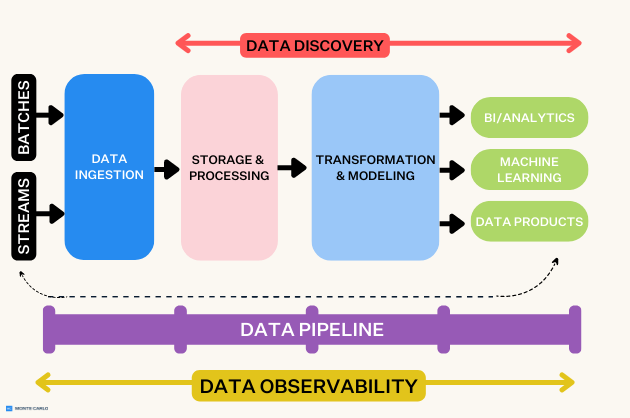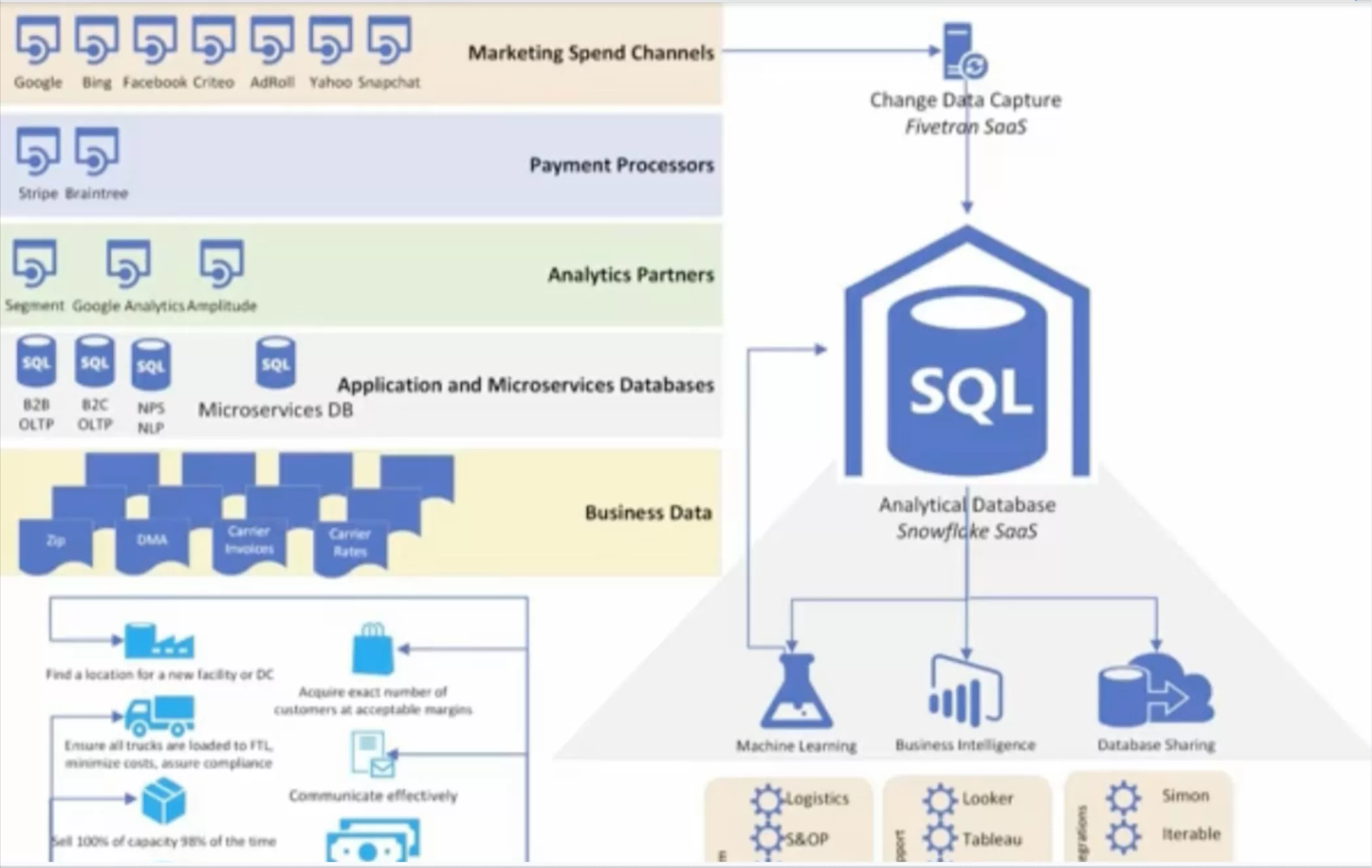The Composable Customer Data Platform: Everything You Need To Know
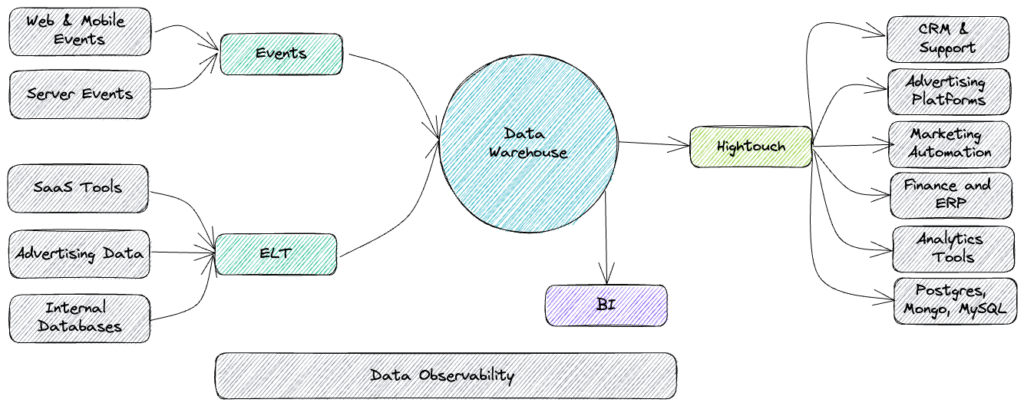
Introduction
Thanks to the continued push towards a privacy-first internet, first-party customer data has never been more important to digital organizations. With the imminent death of third-party cookies and the rising expectations of modern consumers, companies are quickly moving to invest in implementing scalable customer data infrastructures that can deliver on their many needs.
While most organizations historically have turned to legacy Customer Data Platforms (CDPs), they quickly realized that their rigid data models, high costs, and redundant data silos greatly limited their effectiveness.
Empowered by the rise of the modern data stack, leading companies like Warner Music Group, Chime and Petsmart are now turning to the Composable CDP to unlock a modular customer data architecture that centers on the cloud data warehouse. Doing so capitalizes on existing cloud investments while bringing data and marketing teams closer than ever before.
The Rise and Fall of CDPs
Legacy CDPs are bundled solutions that collect and consolidate customer event data into a single user profile. They then give marketing teams an easy way to visually define custom audiences and map customer data to downstream systems.
While these bundled solutions quickly rose in popularity for marketing organizations over the past decade, questions lingered in their supporting data teams’ minds as to whether these were actually the right solution for collecting and activating customer data.
Collecting behavioral event data is great, but that event data only represents a fraction of that customer’s identity and actions. Further, with the number of data sources exponentially increasing and businesses increasing their cloud warehouse data investments to keep up, is there a need for another place to store and manage data? Why not build one single store of customer data to activate from centrally?
With the rapid adoption of cloud data warehouses and an entire ecosystem of tooling to support it, one can only question: are bundled CDPs the right approach for activating customer data? Or can teams capitalize on the data investments already in place by leveraging the data warehouse to empower marketing and data teams with actionable customer data?
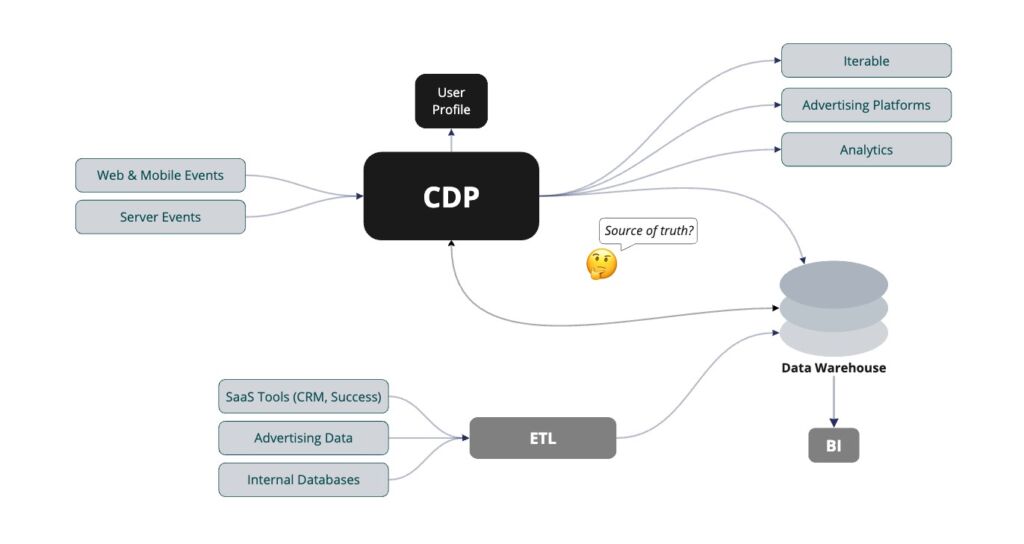
One apparent flaw with the legacy CDP architecture is that you’re storing customer data in an entirely different environment when you likely already have a cloud data warehouse doing the same thing. Other downsides to legacy CDPs include the following:
- Time-to-Value: Implementing CDPs can take upwards of a year, not even accounting for training and onboarding time.
- Cost: All of your customer data already exists in your data warehouse. Using a CDP means you end up paying to store the same customer data twice.
- Flexibility: CDPs have rigid data models that do not account for custom objects like workspaces, playlists, carts, search history, tickets, etc., which are necessary data points to deliver personalized marketing at scale.
- Data Availability: CDPs focus primarily on event-based data, leaving offline data or data from internal databases inaccessible to marketing teams. Additional date limitations leave teams unable to leverage historical data in campaigns.
- Data Ownership: With a CDP, customer data is stored outside your cloud infrastructure, so you are at the mercy of how the CDP manages your data.
- Vendor-Lock-in: Legacy CDPs lock you into a single platform and make you evaluate and purchase everything upfront before seeing any value.
“We didn’t choose an off-the-shelf CDP like Segment because a substantial amount of engineering is required to get it up and running, and at the end of the day, it is just a second source of truth. Why would we buy a CDP when all of our data modeling is already being done directly in Snowflake?
“We didn’t choose an off-the-shelf CDP like Segment because a substantial amount of engineering is required to get it up and running, and at the end of the day, it is just a second source of truth. Why would we buy a CDP when all of our data modeling is already being done directly in Snowflake?
– Ryan Newsome, Head of Data & Analytics, Compare Club
What is a Composable CDP?
A Composable CDP takes all the components of a legacy CDP -data collection, data storage, modeling, and data activation- and lets you select the best tool for each task rather than being limited to the features only provided by the CDP vendor. The core differentiating factor of a Composable CDP is that all of the architecture is built around your existing data warehouse rather than the fragmented customer view that a legacy CDP provides.

The Components of a Composable CDP
While the Composable CDP is a flexible architecture that can be customized to meet your many needs, the architecture includes four major components:
- Data Collection: The process of collecting and ingesting data from various sources into your warehouse. Fivetran is a popular data integration tool for SaaS, application, and product data, while tools like Snowplow handle behavioral event collection.
- Data Storage and Modeling: The process of storing your data in a cloud data warehouse before then modeling and transforming your data to provide a single customer view. Teams typically turn to dbt for data transformation and modeling needs.
- Data Observability: Reducing the amount of data downtime is crucial to maintaining the trust end users have in the data provided to them and getting the data they need when needed. Integrating an data observability platform like Monte Carlo helps to monitor and improve the health of the data in your warehouse by highlighting any data reliability problems so users can quickly understand, troubleshoot, and prevent issues.
- Data Activation: With data collected, stored, and modeled in the data warehouse, Data Activation platforms like Hightouch are used to automate how data is sent OUT of the warehouse and TO the downstream tools of business teams. In addition to its core SQL-based modeling capabilities, Hightouch offers an entire suite of marketer-first features –Customer Studio– to enable less technical users to explore, manage, activate, and analyze customer profiles and audiences from the data warehouse to over 150 business, advertising, and marketing destinations.
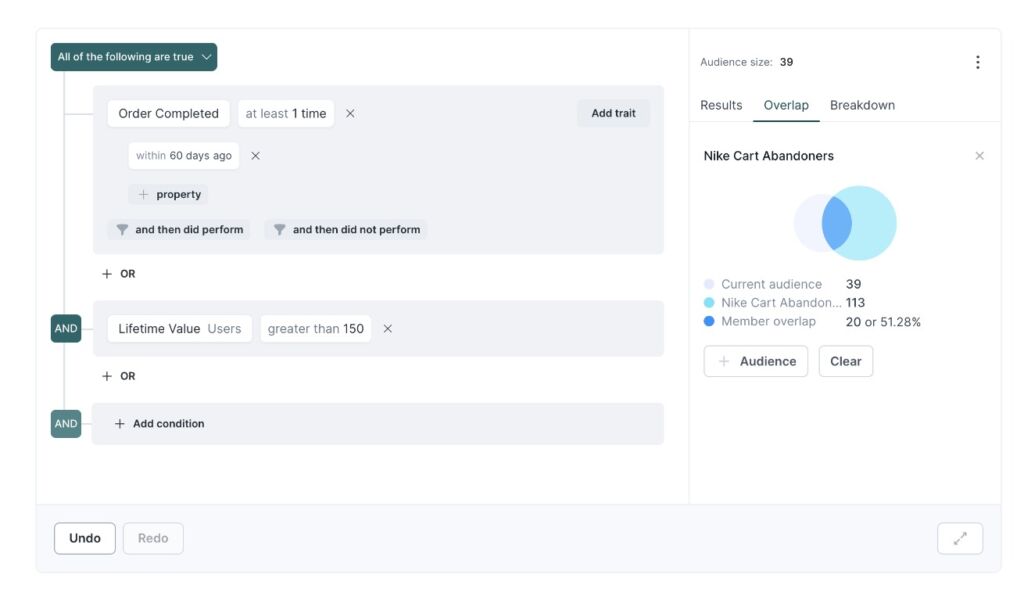
The Benefits of Using a Composable CDP
Now that you know the downsides to the legacy CDP architecture, as well as the components that make up a Composable CDP, let’s look at some of the benefits of using a Composable CDP:
- Single Source of Truth: A Composable CDP allows you to gather data from all sources—not just clickstream data—thus creating a true 360-degree view of your customers.
- Flexibility: A Composable CDP allows you to model your data stored in the data warehouse however you like so that you can leverage related objects such as workspaces, search history, or carts.
- Future Proof and Modular by Design: Because a Composable CDP has multiple components, it protects you from vendor lock-in. You can choose the best tool for each piece of the CDP and enjoy the ease of change in the future.
- Data Ownership/Governance: Unlike a legacy CDP, where a subset of customer data sits outside of your cloud infrastructure, a Composable CDP simply queries from the data stored in your data warehouse, giving you complete control over data access and governance.
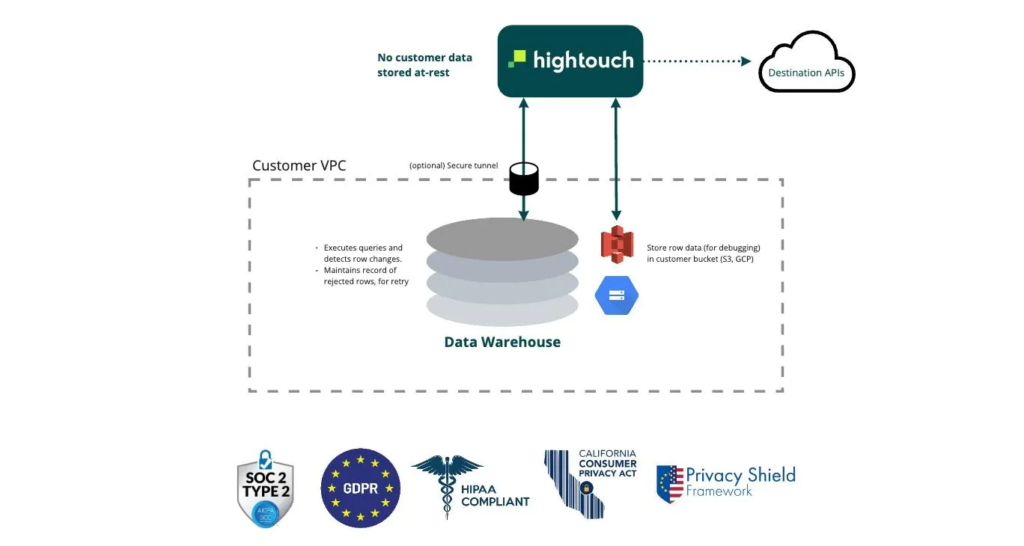
- Time to Value: With a Composable CDP, you can start immediately using the data you already have in the data warehouse.
- Cost: Legacy CDPs come with a high price for the tool itself before adding indirect training and implementation costs. As mentioned, you likely already have most of the components of a Composable CDP in your stack today, so you don’t have to duplicate costs with a legacy CDP.
- Data Quality: Activation tools like Hightouch offer alerting and monitoring for data activation pipelines. You can set up notifications based on custom criteria to get notified as soon as there is an issue. You can get even deeper monitoring by integrating with a data observability platform like Monte Carlo, which can help trace data lineage to investigate the root cause and quickly resolve it to maintain high data quality.
Composable CDP Use-Cases
A Composable CDP offers more control and flexibility for addressing customer data priorities. Further, a Composable CDP can help modern marketing teams with the following:
- Power personalized marketing campaigns by defining retargeting audiences using data points such as purchase propensity scores or engagement data.
- Maximize ad effectiveness by utilizing current buyer audiences to create lookalike or suppression campaigns across paid channels.
- Drive experimentation across channels by automatically creating and syncing multivariate audience splits to lifecycle marketing tools and ad platforms before analyzing performance and KPIs.
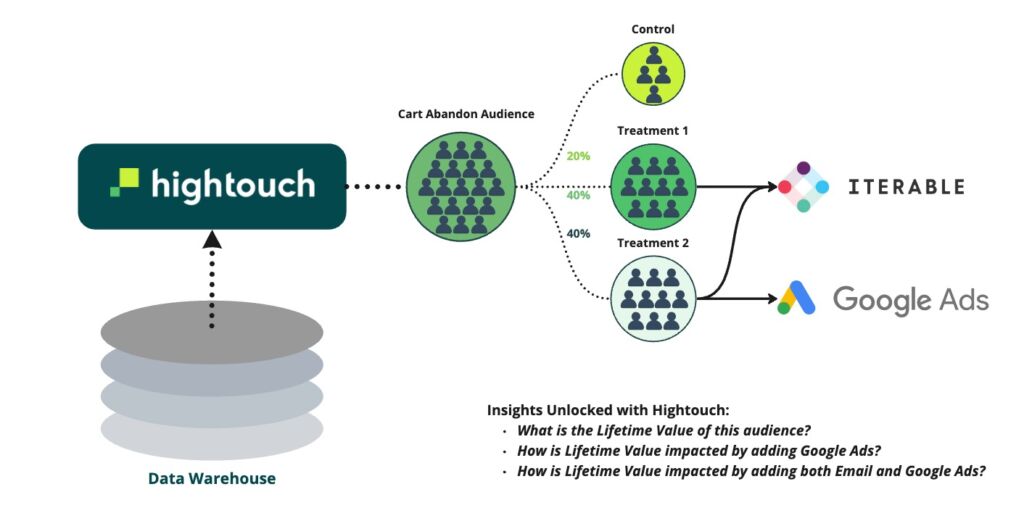
How To Get Started with a Composable CDP
Getting started with a Composable CDP is easier than ever. By simply integrating a Data Activation platform like Hightouch with your data warehouse, you can begin activating existing data to your downstream business applications to power your many marketing and operational use cases in minutes.
Hightouch queries directly against your data warehouse, enabling you to use your existing data models and sync that data to over 150 destinations. Best of all, the first integration with Hightouch is free when you create a new workspace.
Want to learn more about the Composable CDP? Request a demo today.
Have a composable CDP or reverse ETL in place and want to monitor your data more effectively? Set up a time to talk to the Monte Carlo team by filling out the form below.
Our promise: we will show you the product.
 Product demo.
Product demo.  What is data observability?
What is data observability?  What is a data mesh--and how not to mesh it up
What is a data mesh--and how not to mesh it up  The ULTIMATE Guide To Data Lineage
The ULTIMATE Guide To Data Lineage 

